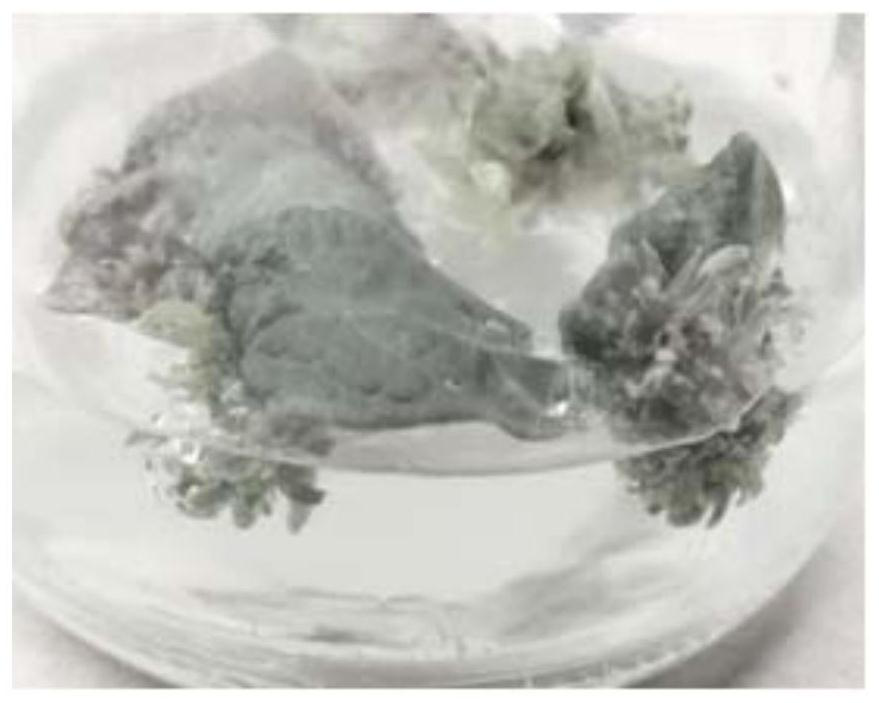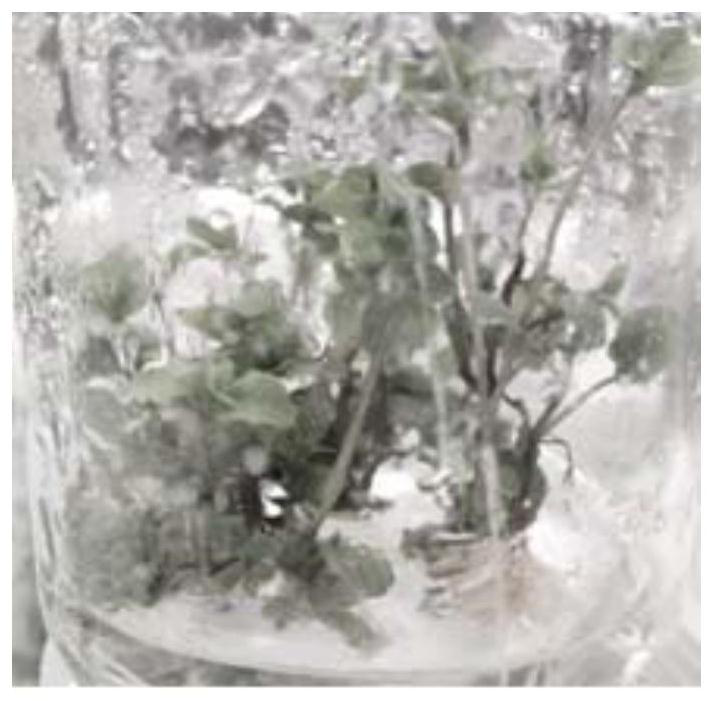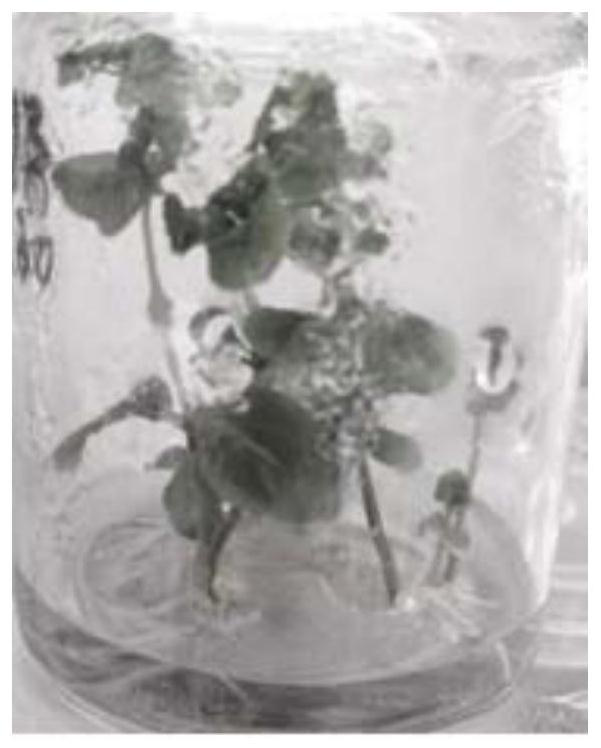A method for rapidly propagating seedlings using four-leaf ginseng leaves
A four-leaf ginseng and leaf technology, which is applied in the field of plant tissue culture, can solve the problems of low differentiation rate, high mortality, and short growth, and achieve the effects of neat growth, simple process flow and consistent physiological age.
- Summary
- Abstract
- Description
- Claims
- Application Information
AI Technical Summary
Problems solved by technology
Method used
Image
Examples
Embodiment 1
[0031] 1. Leaf-induced differentiation and adventitious bud process
[0032] Take the young four-leaf ginseng leaves, wash and sterilize them, dry the water with sterile paper, and inoculate the whole piece in the induction medium (MS+6-BA 0.8mg / L+NAA0.5mg / L+sucrose 30g / L+Kara Adventitious buds were induced to differentiate on the gelatin 6.5g / L, the pH of the medium was 5.8). Culture conditions: culture temperature 24~26℃, light culture, light time 10~12h / d, light intensity 20~30μmol m -2 ·s -1 . Culture for about 10 days, and start to differentiate adventitious buds at the incision of the leaf or on the surface of the leaf (see figure 1 ). After culturing for 20 days, they were cut into small pieces and inoculated on fresh induction medium for subculture.
[0033] 2. The cultivation process of strong seedlings
[0034] The adventitious buds after subculture proliferation were cut into small clusters (blocks) and transferred to strong seedling medium (MS+6-BA 0.5mg / L+NA...
Embodiment 2
[0044] 1. Leaf-induced differentiation and adventitious bud process
[0045]Take young four-leaf ginseng leaves, wash and sterilize them, dry the water with sterile paper, and cut them into small pieces of about 0.5cm × 1.0cm along the vertical direction of the leaf veins and inoculate them in the induction medium (MS+6-BA 2.5mg). / L+NAA0.1mg / L+sucrose 30g / L+carrageenan 6.5g / L, medium pH value is 5.8) to induce differentiated adventitious buds. Culture conditions: culture temperature 24~26℃, light culture, light time 10~12h / d, light intensity 20~30μmol m -2 ·s -1 . After about 10 days of culture, adventitious buds began to differentiate at the incision of the leaf or on the surface of the leaf. After culturing for 20 days, they were cut into small pieces and inoculated on fresh induction medium for subculture.
[0046] 2. The cultivation process of strong seedlings
[0047] Divide the adventitious buds after subculture into small clusters (blocks) and transfer to strong s...
Embodiment 3
[0057] 1. Leaf-induced differentiation and adventitious bud process
[0058] Take young four-leaf ginseng leaves, wash and sterilize them, and dry them with sterile paper, then cut them into small pieces of about 0.5cm × 1.0cm along the vertical direction of the veins and inoculate them in induction medium (MS+6-BA 2.0mg). / L+NAA0.3mg / L+sucrose 30g / L+carrageenan 6.5g / L, medium pH value is 5.8) to induce differentiated adventitious buds. Culture conditions: culture temperature 24~26℃, light culture, light time 10~12h / d, light intensity 20~30μmol m -2 ·s -1 . After about 10 days of culture, adventitious buds began to differentiate at the incision of the leaf or on the surface of the leaf. After culturing for 20 days, they were cut into small pieces and inoculated on fresh induction medium for subculture.
[0059] 2. The cultivation process of strong seedlings
[0060] Divide the adventitious buds after subculture into small clusters (blocks) and transfer to strong seedling ...
PUM
 Login to View More
Login to View More Abstract
Description
Claims
Application Information
 Login to View More
Login to View More - R&D
- Intellectual Property
- Life Sciences
- Materials
- Tech Scout
- Unparalleled Data Quality
- Higher Quality Content
- 60% Fewer Hallucinations
Browse by: Latest US Patents, China's latest patents, Technical Efficacy Thesaurus, Application Domain, Technology Topic, Popular Technical Reports.
© 2025 PatSnap. All rights reserved.Legal|Privacy policy|Modern Slavery Act Transparency Statement|Sitemap|About US| Contact US: help@patsnap.com



